7 of the best places to visit on a Cuba holiday – and where to stay
You’ll take a step back in time when you visit this Caribbean island
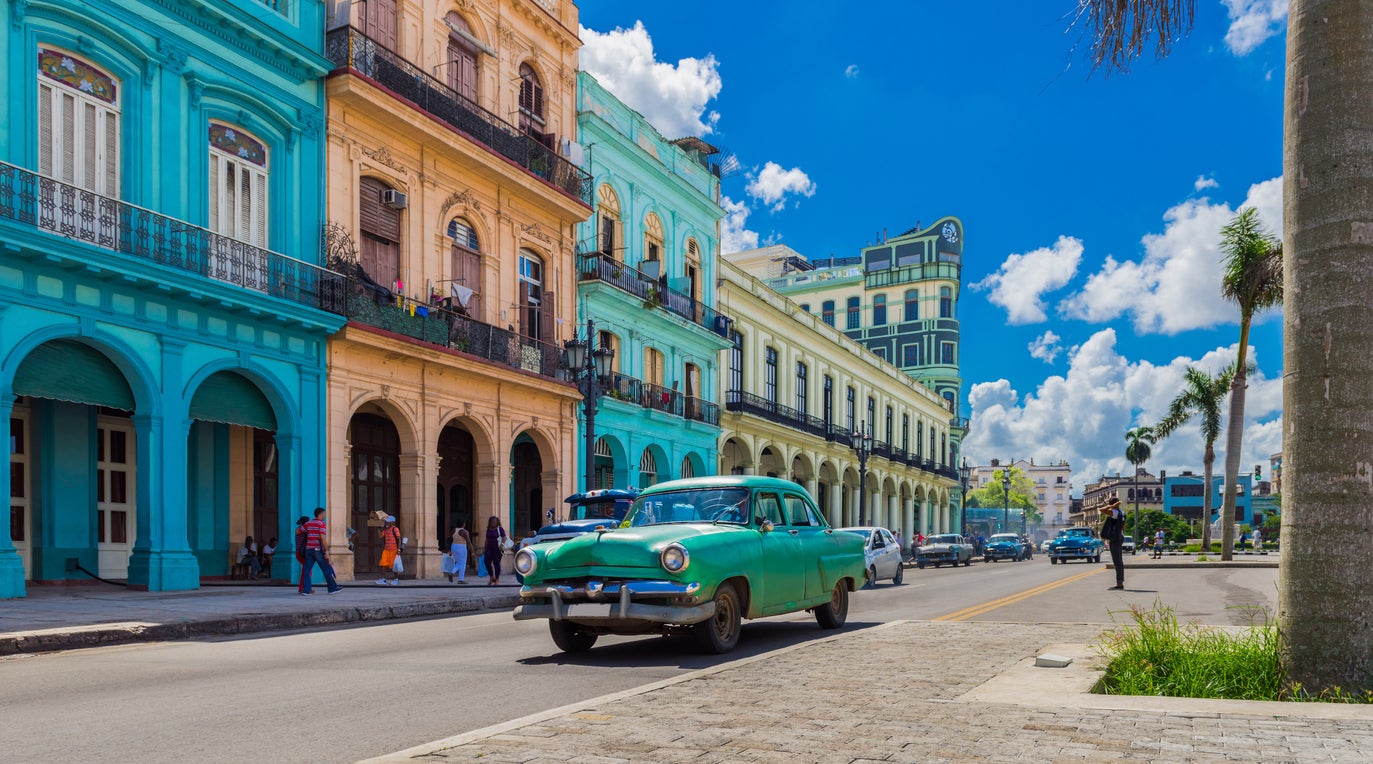
Although its tropical setting is similar to its Caribbean neighbours, a distinctive history and culture make Cuba a truly unique destination.
It is a country that evokes images of times gone by, from vintage cars, classic cocktails and colourful architecture to murals of past leaders and revolutionaries.
Despite moves towards modernisation, Cuba still retains a palpable sense of the past. From the colonial architecture of places like Santiago de Cuba to the old town of Havana and the landmarks of charming Trinidad, this is a country where the past visibly lives on in day-to-day life. Add to this dazzling white beaches and abundant natural beauty, and you have everything you could want from a Caribbean break – especially if you’re after some winter sun.
Tourists often don’t venture far beyond Havana and the beach resorts of Varadero, but there’s far more to be discovered on this small but culturally rich island.
Havana
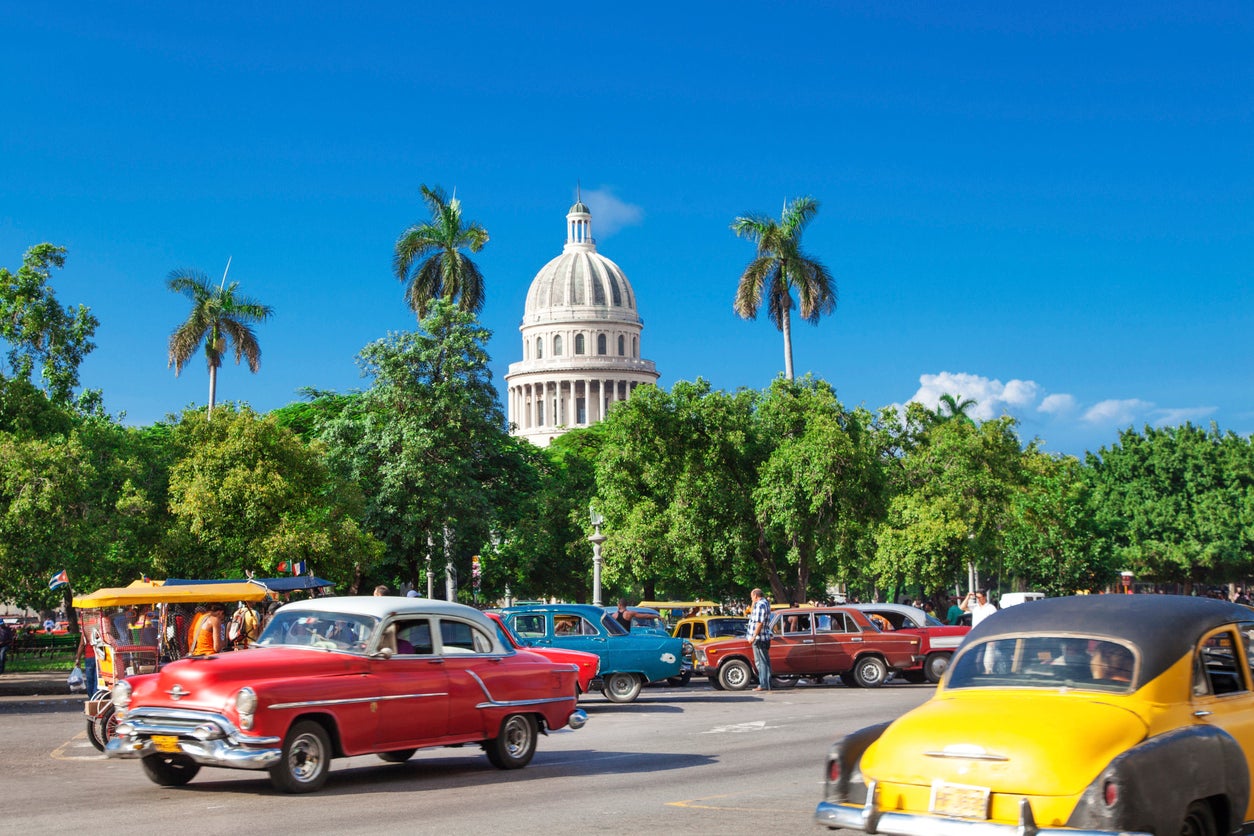
Havana is the Cuba that we all imagine before visiting; where vintage American cars glide down streets lined with colourful buildings and 18th-century colonial architecture continues to age delicately. It is a place where the old and the new collide. Colonial grandeur sits alongside visible remnants of the Cold War legacy and contemporary efforts at modernisation.
The characterful ‘Habana Vieja’ (’Old Havana’) gives an architectural history tour, showcasing buildings like the the Capitolio Nacional – the most grandiose building in the country, built in 1926 – and the 18th-century cathedral. The squares, like 16th-century Plaza Vieja, and cobblestone pedestrianised roads including Calle Obispo and Calle Mercaderes, are the most atmospheric parts of the city.
The city’s museums include the Museum of the Revolution, the Morro-Cabana military park and even one dedicated to Napoleon, while two major art galleries exhibit both national and international art. The main cemetery, the Necropolis Cristobal Colon, is an impressive national monument, while the nearly five-mile Malecon, which snakes around the seafront, showcases quintessential Havana through its busy promenade and colourful buildings.
Where to stay
The Gran Hotel Manzana Kempinski was one of the first five-star hotels in the country when it opened in 2017, and it lies in a former mall and government building that offers some of the most fantastic views over the city from its rooftop pool and terrace. Its location in Old Havana is ideal for exploring the most enchanting part of the city.
Doubles from £255 per night; kempinski.com.
Read more on Central America and Caribbean travel:
Trinidad
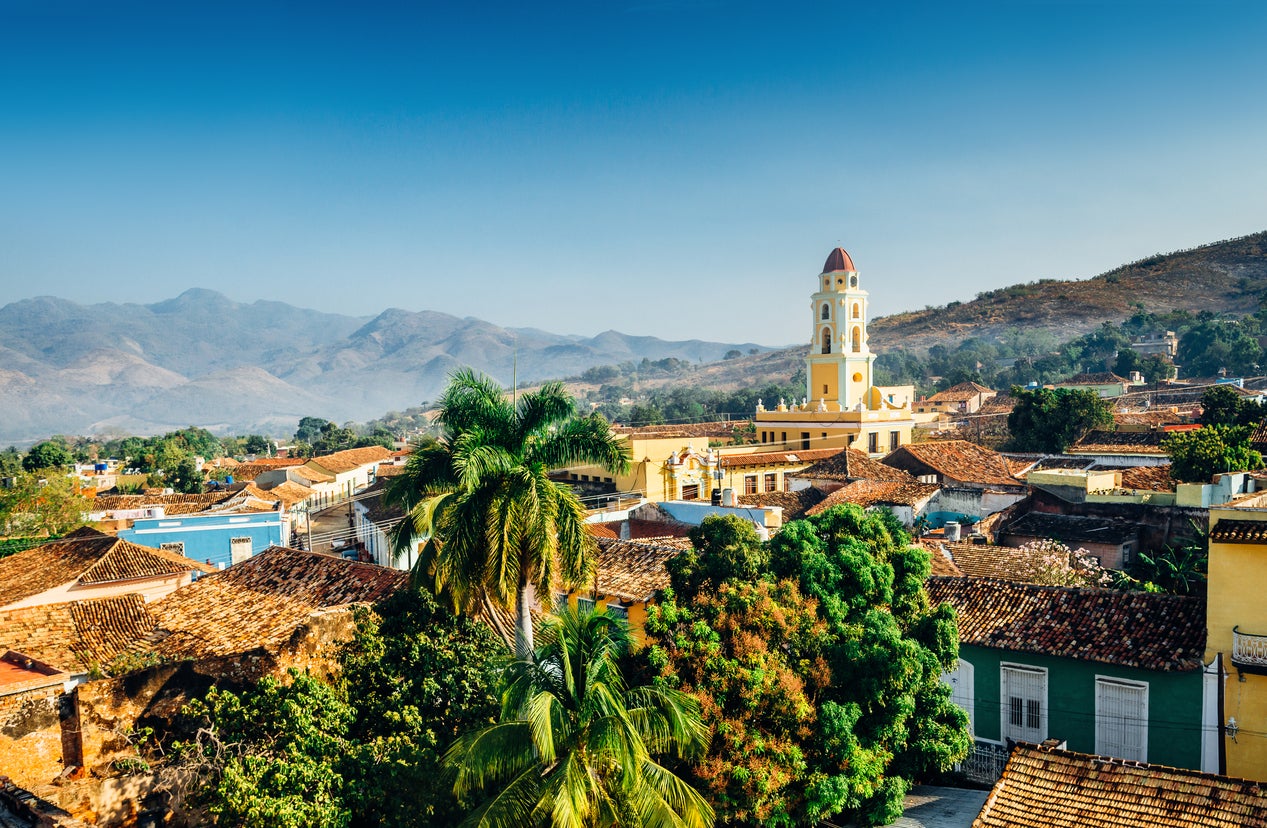
Trinidad is filled with colonial-era architecture, old cobbled streets and plenty of red roofs and colourful facades. It can feel as though Trinidad is stuck somewhere in the 19th century, when fortunes made from the production of sugar led to the construction of the pastel-hued buildings and colonial-style mansions that line the streets today.
The Plaza Mayor, Plaza Santa Ana and several churches are examples of the 17th- and 18th-century structures that contributed to the city’s inscription as a Unesco heritage site in 1988. Today, many of these buildings house the city’s cultural landmarks, from the Museum of Municipal History to the Benito Ortiz art gallery, which showcases local art.
There’s plenty to do on the outskirts of Trinidad too, with a trip to the Valley of the Sugar Mills of the Escambray mountains popular for both hiking and exploring the city’s sugar-related history. Meanwhile, those in search of parties and beach relaxation can head to La Boca and Playa Ancon, where they’ll be greeted by a picturesque fishing village and fine white sands.
Where to stay
The Iberostar Grand Trinidad offers a slice of adults-only tranquility in the centre of the city, less than 10 minutes away from the Plaza Mayor. Set in a beautiful pastel-green colonial-style building, it has magnificently elegant interiors throughout and a restaurant that serves gourmet Cuban specialties.
Doubles from £312 per night; ibercuba.com.
Viñales Valley
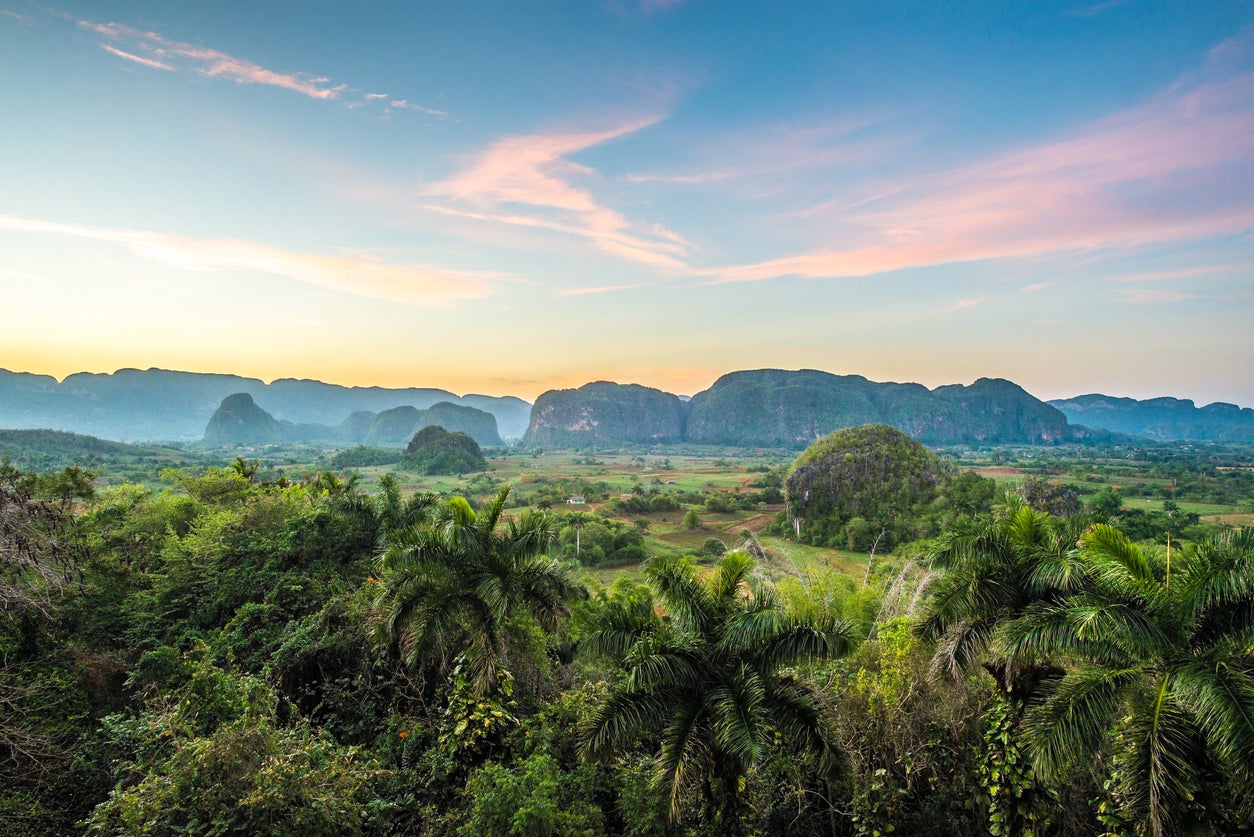
The Valle de Viñales is Cuba’s tobacco and coffee-growing heartland. It is situated around 100 miles west of the capital, and has gained a reputation as one of the most beautiful places in the country thanks to the dense tropical vegetation, red soil, verdant tobacco fields and the giant limestone hills scattered throughout.
The valley provides an insight into rural Cuban life – as well as some of the island’s finest coffee and tobacco – with opportunities to learn about the plantations and stay in private homes (known as casas particulares), where locals can help you navigate Cuba’s occasionally complicated culture and way of life. Casa owners will often organise activities to help you explore the valley.
Where to stay
The Los Jazmines hotel surely has some of the best views of any hotel in Cuba, with the rooms and pool overlooked by the verdant hills and tobacco fields. The hotel is set in a pink building, with rooms that are rustic and colourful.
Contact hotel directly for prices and availability.
Varadero
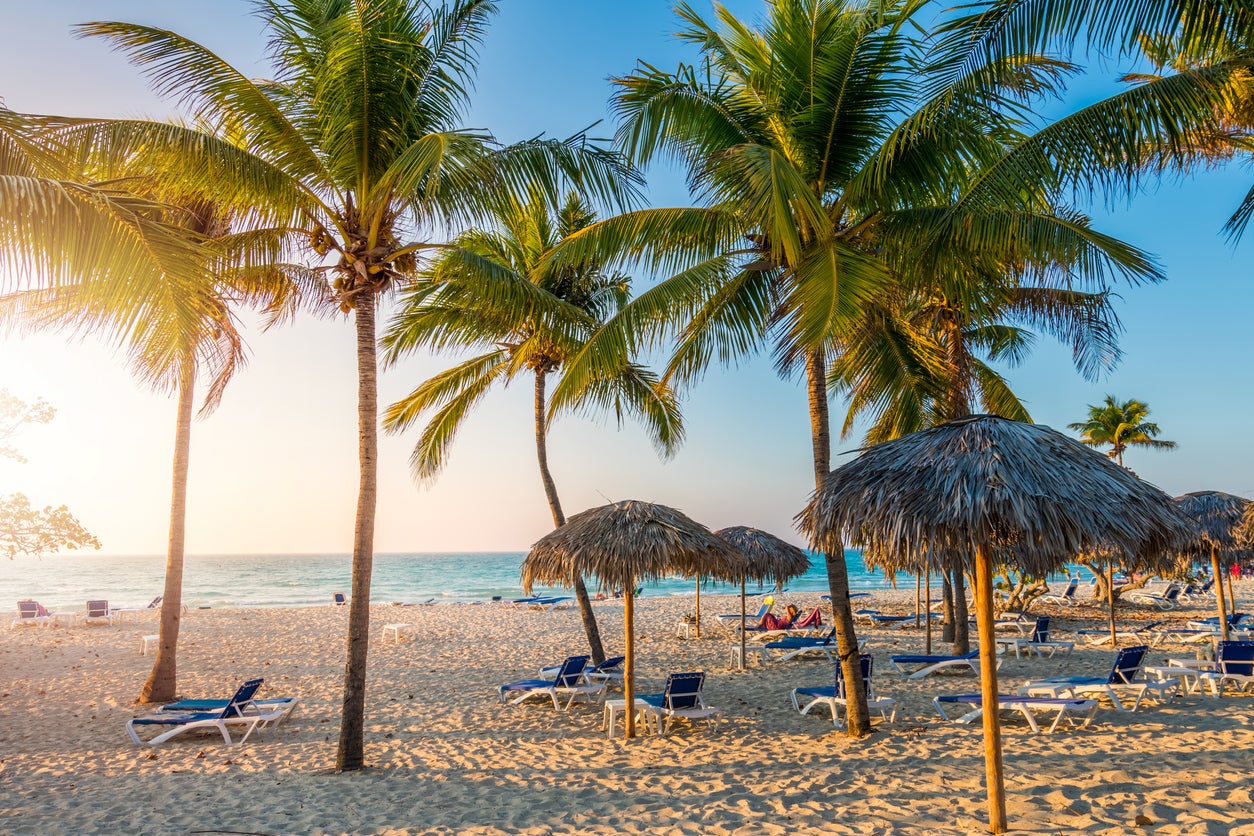
Varadero is Cuba’s seaside resort area, where long stretches of palm-fringed sands meet the azure waters of the Atlantic Ocean. This is the place to come for a laid-back few days, with the seemingly never-ending beach complemented by a range of activities including various water sports, boat trips and scuba diving at the Cayo Piedras del Norte. The relaxed vibe also encourages afternoons and evenings spent sipping cocktails as part of hotel-hosted party nights or on rooftop bars and clubs like Mansion Xanadu and Casa de la Musica.
The area is also home to the mini oasis of Josone Park, the pretty Gaviota marina, and the Ambrosio caves, where visitors can see pre-Columbian drawings on a self-guided tour. Accommodation ranges from luxe all-inclusives to the aforementioned casas particulares – although you’d be well-advised to venture out the resorts to experience authentic Cuba.
Where to stay
The Melia Las Americas has everything you’d expect from a seaside resort hotel, from direct access to Varadero Golf Club to modern interiors and affordable all-inclusive options. It sits along its own section of beach, and provides an array of pools, sports and water sports facilities.
Doubles from £141 per night, all-inclusive; melia.com.
Santiago de Cuba
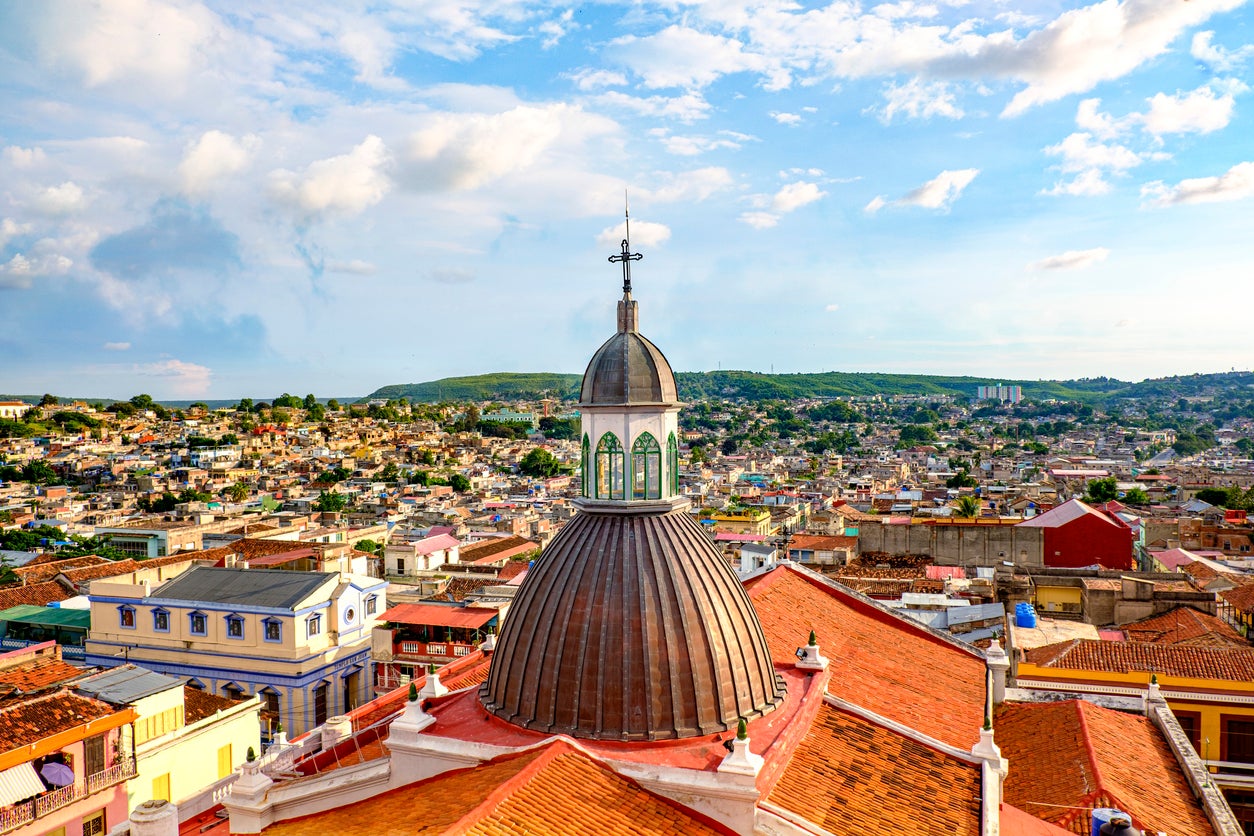
Santiago de Cuba is the capital of the province of the same name, and this easterly region is often billed as the country’s cultural capital. It has drawn on Caribbean and West African influences alongside Cuban traditions, making it a somewhat unique part of the country where Afro-Caribbean culture brings an upbeat rhythm to the leisurely pace of life.
The city is architecturally characterised by its colonial-era buildings, but its place as the centre of the 1959 revolution and a focal point of Afro-Cuban culture has come to define it in the modern day. The revolutionary spirit lives on in a city where the largest carnival celebrations in Cuba take place every July, and where live venues move to the rhythm of son Cubano and salsa the rest of the year.
The city has fewer notable attractions than Havana, but the Cuartel Moncada, a former barracks that was once the site of one of Castro’s early revolution attempts (and now features a museum of the attack), stands out as an interesting site. Close to town lies the Basilica de Nuestra Senora del Cobre, one of Cuba’s most important religious sites, while further excursions can take you to the golden sands of beaches like Chivirico or Siboney, or the mountain trails of the Sierra Maestra.
Where to stay
If you want a swimming pool in Santiago, you’ll have to turn to one of the large chains, and we’d suggest the Melia Santiago. It sits to the west of the centre, but this location allows space for two pools, and the building offers sweeping views over the city. Rooms are also more modern than others.
Doubles from £85 per night; melia.com.
Cienfuegos
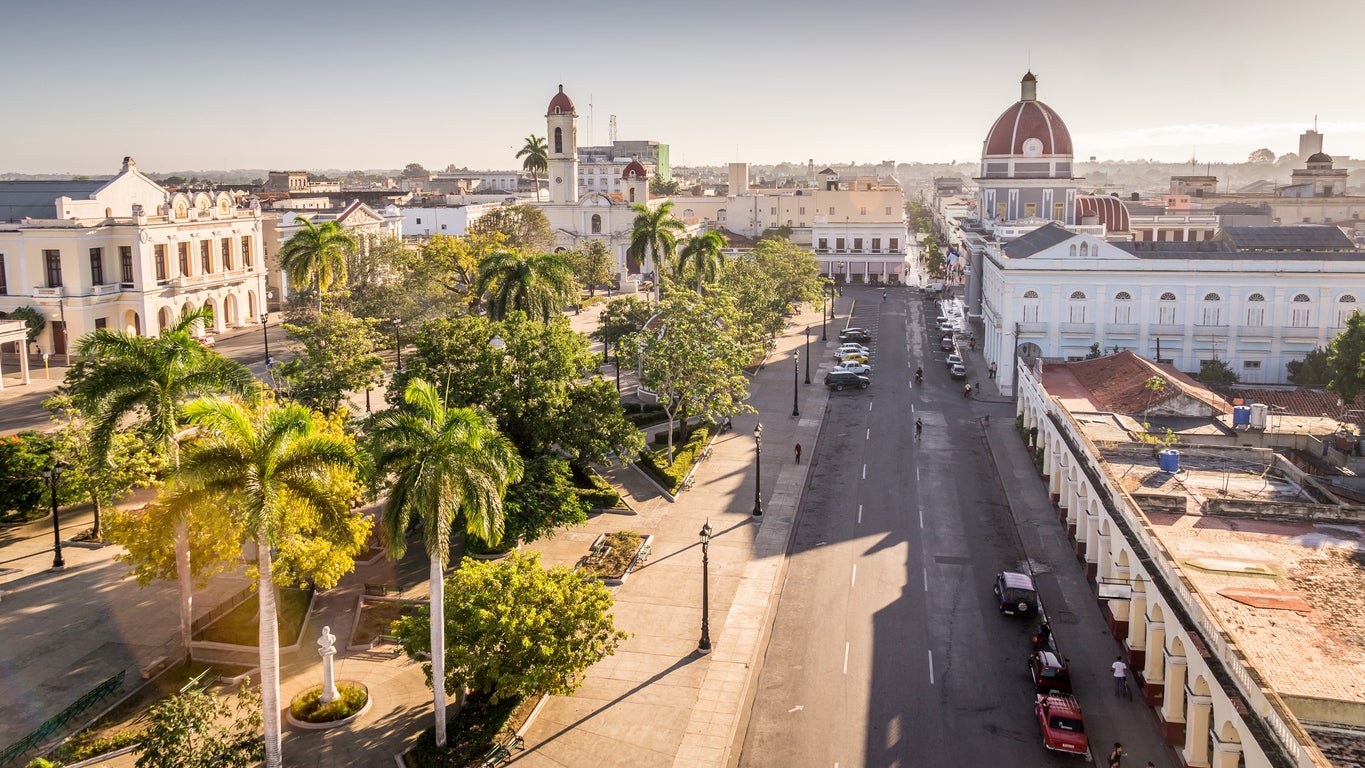
Cienfuegos is nicknamed the ‘Pearl of the South’, and this Unesco-listed city carries a palpable French influence from the early founders who settled here. According to Unesco, these settlers brought with them influences from French cities and colonies including Louisiana and Bordeaux, something that is visible today in the city’s architecture. Several buildings look like they were transported straight from New Orleans or Bordeaux, from the Palacio Ferrer art museum to the Arco de Triunfo and the Tomas Terry theatre.
Cienfuegos sits on a picturesque natural bay (that allows for water sports including kayaking and windsurfing) surrounded by a mountainous backdrop, giving the city a picturesque natural setting. The malecon runs along the bay, offering fantastic views as the sun starts to set. On the opposite side of the bay to the city, the Jagua Castle attracts visitors wanting to see once of Cuba’s largest fortresses, while there are also beaches both on and close to the bay, such as those of Rancho Luna.
Where to stay
The Melia San Carlos is one of two hotels in the main part of town. The more modern of the two, it has elegant contemporary interiors, and though it doesn’t have a pool, guests can use that of the Melia Union hotel close by. The rooftop terrace has fantastic views over the town.
Doubles from £97 per night; melia.com.
Baracoa
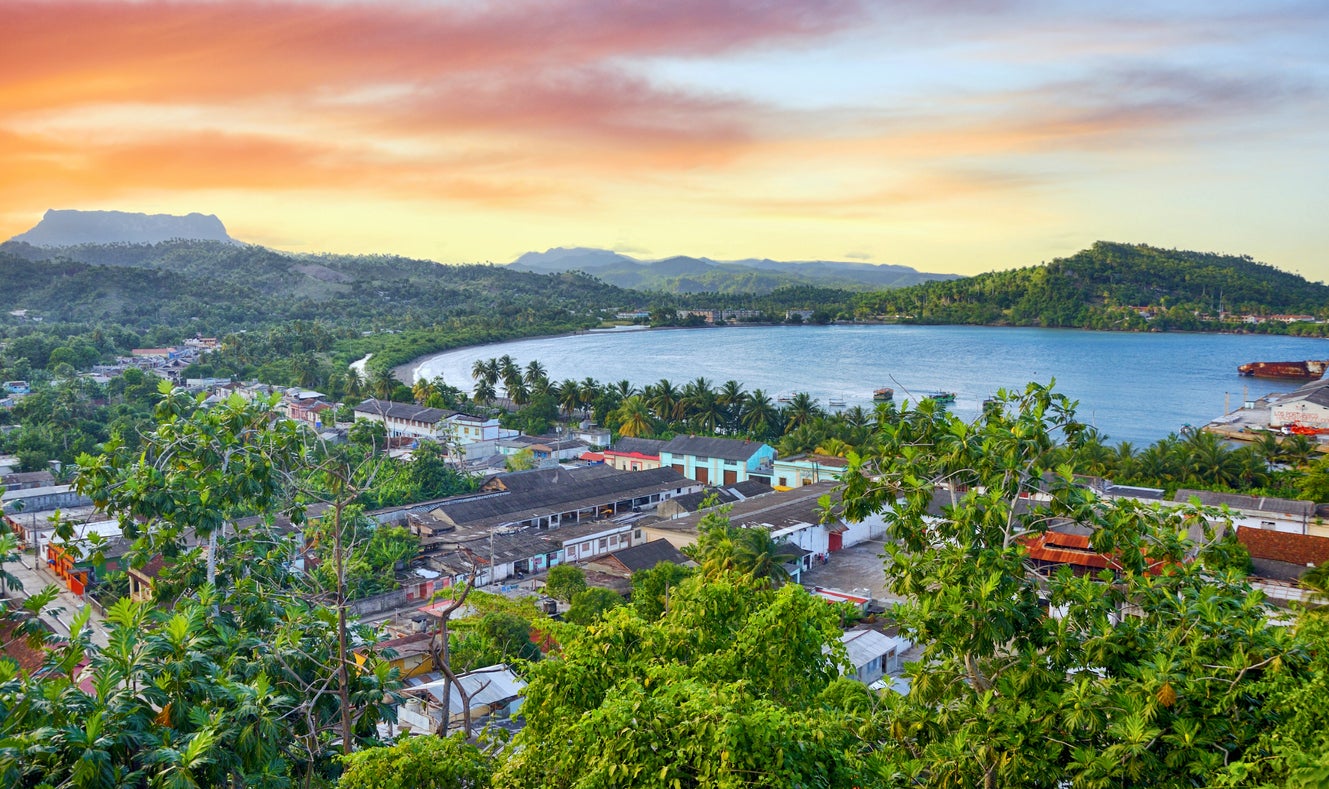
Part of the attraction of visiting Baracoa is the enchanting journey to get there, which takes visitors along a 37-mile road that is renowned as one of the most scenic drives in the country (the full route from Santiago de Cuba, known as La Farole, extends for around 150 miles). The route snakes through jungle, mountains and rivers, leading you to a beautiful section of countryside that sits right on the southeastern edge of the country.
Nature is king in Baracoa, with the reward for completing arguably Cuba’s best road trip being even more remoteness and wilderness. There are some lovely beaches – including Playa Blanca, Playa del Miel and the black sands of Playa Duaba – as well as the wonderful Majayara National Park, which provides plenty of wild swimming and hiking opportunities. The region’s most recognisable sight is the Yunque mountain, rising to around 500m but extending to almost a kilometre wide at the top.
Baracoa’s lack of outside influence for many years means that a lot of the old architecture has been well-preserved, such as the forts that used to protect the city – Matachin, Fuerte de la Punta and the Seboruco castle – and squares like Plaza Independencia. Baracoa’s most impressive museum is the Cueva del Paraiso, a series of caves that were once indigenous burial chambers, while the Casa del Cacao provides an insight into the centre of Cuba’s chocolate production.
Where to stay
Baracoa’s more sparse tourism infrastructure means hotel options are limited, but the La Habanera hotel will provide you a comfortable, if simple, stay in the centre of town. Rooms are pared-back, but the hotel itself is a fitting place to stay in a town that is reminiscent of days gone by.
Doubles from £45 per night; greaterantilleshotels.com
Read our reviews of the best winter sun hotels
Join our commenting forum
Join thought-provoking conversations, follow other Independent readers and see their replies
Comments